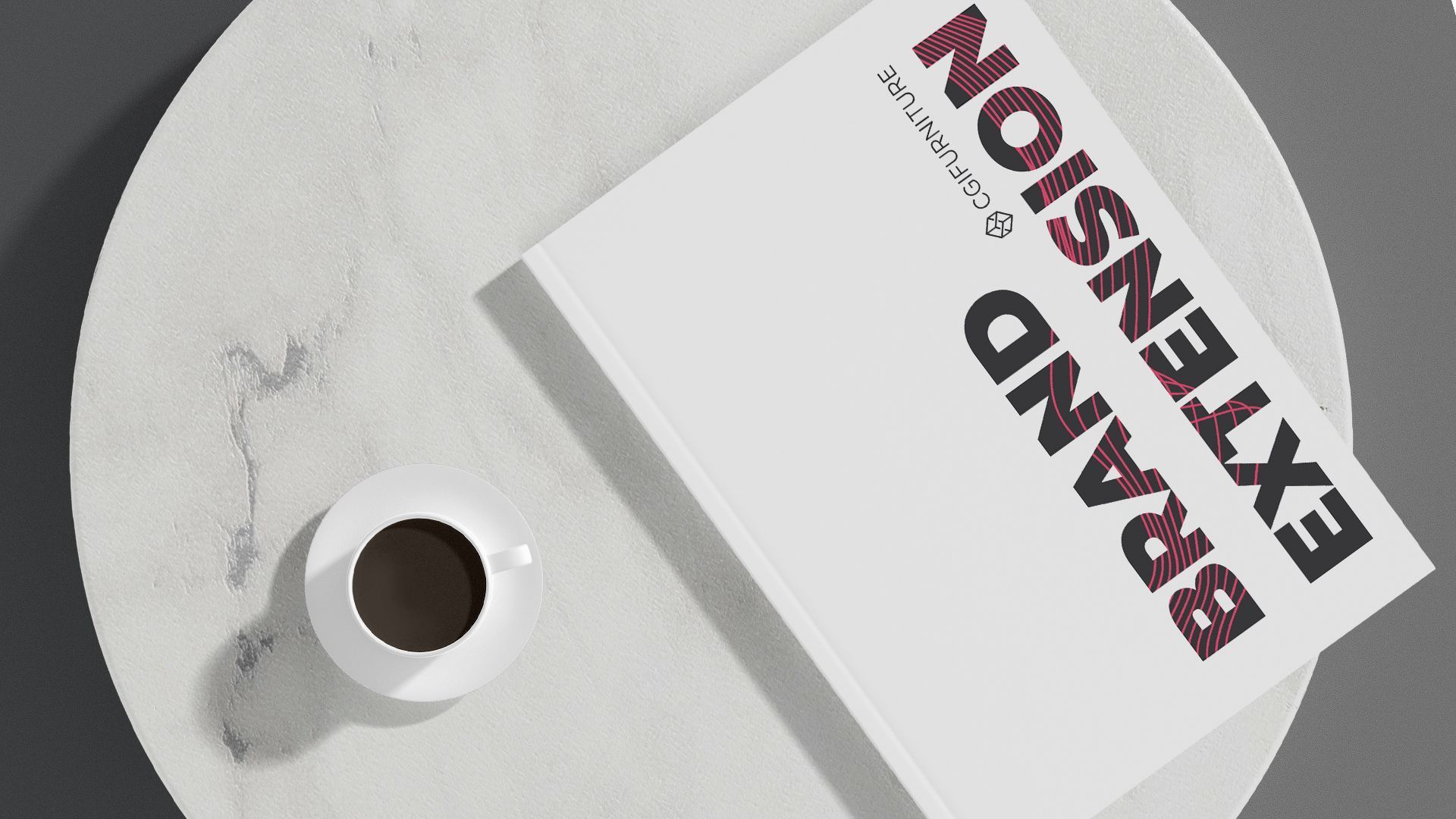Successful brands require careful management and thoughtful strategy. If you’ve ever wondered how to grow your business in a competitive environment, stretching and expanding your brand can help. Both methods allow companies to capitalize on existing brand equity, enter new markets, and increase profits. However, they are entirely different ways to grow your brand.
Our CGI company has prepared an article about these methods with detailed explanations for each of them. Learn about the differences between brand stretch vs brand extension, the benefits and risks of these strategies, and the right way to implement them.
1. What is Brand Stretch?

Brand stretching is a marketing strategy that involves expanding existing brand offerings — differentiating its current offerings but maintaining the image and reputation of its main brand. In other words, it is the process of developing the target group of a certain brand by introducing new products and services under the same name. This is a way to use a well-known brand to enter new markets and compete with other brands.
It is possible to stretch a brand using any marketing technique, such as advertising or public relations. Some companies prefer to keep the same brand image across all platforms to ensure a consistent customer experience.
A significant goal of brand stretch is to increase brand awareness, sales, and market share by expanding product lines. This is also used to reduce cannibalization between existing brands in the same category.
The Benefits of Brand Stretching:
The benefits of brand stretch are obvious — if you’ve already built up your brand in one industry, it can be easier to leverage that same brand recognition and start building in another. And if your products are already well-known, you may not have to spend as much time or money on advertising or marketing.
On the other hand, stretching a brand too far can lead to dilution of its original message and identity, which can cause confusion among consumers and ultimately pull sales.
2. What is Brand Extension?

Brand extension is a marketing strategy used by companies to expand their product range by using the same brand. This method can be used both for a new product and for expanding an existing product line. It can also be done to expand a company’s market presence, increase its revenues, and improve its brand image.
The idea behind the brand extension is simple: if one of your products has been successful in the marketplace, then why not try selling it under another name? If no legal restrictions are preventing this sort of thing (i.e., if you’re not producing an identical product), then it’s possible to create an entirely new brand name that will help sell more of your product line — without damaging the original one!
The Benefits of Brand Extension:
- Brand extension can increase revenue and profits for your business because it helps you target new customers and sell more products in the process.
- It allows you to expand your market share and gain access to untapped markets, which may lead to increased sales volume and revenue.
- Brand extension gives consumers more choices at lower prices by leveraging economies of scale. For example, if you own two restaurants in two different locations, each one can offer different dishes on its menu based on demand from local customers in those areas.
In order to understand what makes a brand extension successful, first, consider why companies extend their brands in the first place. Below are some common reasons:
3. Methods of Brand Stretch

Horizontal Stretch (Also Known as Market Expansion)
Horizontal stretch is when a brand expands its product line to increase sales. A company may, for example, introduce new varieties of its existing products or it may create an entirely new product category altogether.
This type of brand extension involves offering products or services outside the current scope of your business model — for example, opening up additional locations outside your home market or expanding into new industries altogether (like launching an online store).
Horizontal stretch is the most common type of brand extension and can be done through several methods:
- Introducing a completely different product.
- Introducing an improved version of an existing product.
- Expanding into a related industry.
Vertical Stretch (Also Known as Product Line Extension)
Vertical stretch is when a brand expands its product line to increase sales. A company may, for example, introduce new varieties of its existing products or it may create an entirely new product category altogether.
Vertical stretch occurs when a company tries to appeal to different segments within its current market. This can happen by changing the product or service offering, or by changing the price point. Vertical stretch usually involves a change in marketing strategy, such as using different advertising channels or messaging.
Stretching Up
Stretching up is the practice of taking a brand to a higher price point or quality level. This is a classic technique used by many companies. The product or service is extended or enhanced to appeal to a wider market by adding new features or benefits. This can be done by:
- Adding a new product category.
- Extending the product line.
- Adding functionality to existing products.
- Creating new products for the same category.
- Coming up with new benefits for existing products.
Stretching Down
This product marketing strategy is used when there is a need to reach out to more budget-sensitive customers. It involves reducing costs, lowering prices, and/or offering discounts on products and services that are already low-cost. As you know, brands are always trying to stretch their appeal and widen the market for their products. Stretching down is one way that brands can do this. To stretch down, a brand will make a product more affordable and/or more accessible. This can be done in several ways:
- By using cheaper materials.
- By lowering the price point.
- By offering coupons or other promotions.
4. Methods of Brand Extension

The BCG Matrix
The BCG Matrix is a marketing tool used to determine the best way to expand a brand. The matrix assesses how well a company’s current products and services can be expanded, and how much growth potential there is for each product. This tool helps to determine whether a company should diversify its product portfolio through market penetration or product development. It represents 4 types of brands: stars, question marks, cash cows, and dogs: Stars – products with strong current sales, high growth potential, and low cannibalization risk.
- Cash Cows – products with low growth potential but high-profit margins.
- Question Marks – products with high growth potential but low-profit margins.
- Dogs – products with low growth potential and high cannibalization risk.
Linear Expansion
Linear expansion is the simplest form of brand extension. The same brand name is used for both the parent and the extension product. For example, when Coca-Cola launched Diet Coke, they didn’t create a new brand name; they just added “Diet” to the existing name of their flagship product, Coca-Cola.
Sub Branding
Sub-branding is a strategy used to create a new product line that is closely related to the main brand. It can also be used to extend the existing product lines into new markets. Sub brands are often created because it is too difficult for companies to enter new markets with their existing brand names due to various reasons such as cultural differences. For instance, when Coca-Cola entered China they had two options: either launch their original drink under another name completely or create something similar but different enough so people would still recognize it as Coca-Cola but at the same time appeal more to Chinese culture and preferences.
Categorical Brand Expansion
Categorical brand expansion is the creation of a new product or service that fits into the existing product category but is a different type of product or service. For example, when Coca-Cola launched Diet Coke in 1982, it extended its original cola product line into another category – low-calorie soft drinks – which had been uniquely targeted towards men previously. New products should be similar enough to their parent brands to be perceived as part of the same family, but different enough to remain distinct. The degree of difference between two brands in the same category determines how much overlap there is between them and how much consumers will associate one with another. If there’s too much overlap, then consumers may not see any difference between them and may not even know which one they prefer.
5. Differences Between Brand Stretch vs Brand Extension

Brand stretch and brand extension are both marketing strategies undertaken by companies to extend their product lines. However, one of the key differences between these two strategies has to do with business objectives.
Brand stretch aims to increase revenue while maintaining profit margins, while the brand extension aims to generate greater profit margins at the expense of revenue.
- Brand stretching involves introducing a new product into the market that is similar to an existing product in terms of functional benefits, but different in terms of price or branding. Brand extension involves introducing a new product that has little or no relationship with the original brand and its customers.
- Brand stretch uses the same name, logo, or other identifiers as an existing brand. Brand extension refers to any new product line within a company’s overall portfolio of products.
- Brand stretch is often used to help companies enter new markets and increase market share. Brand extension is usually employed when marketers want to capture more value from existing customers by offering them more products that are compatible with their needs. Despite their differences, these strategies should be considered together when planning a company’s marketing strategy because each system can complement the other.
There are many ways to grow a brand, but the decision of whether to stretch or extend should be made with careful consideration. Essentially, the difference between stretching and extending is that there is a limit to how far you can go before it affects your current audience’s perception of the brand’s identity. When deciding which direction to take, consider what value can be added by stretching or extending your brand versus starting something new.
Need quality visuals for your products and marketing purposes? Our company provides 3D modeling services to brands around the world. Contact us or book a demo now!
